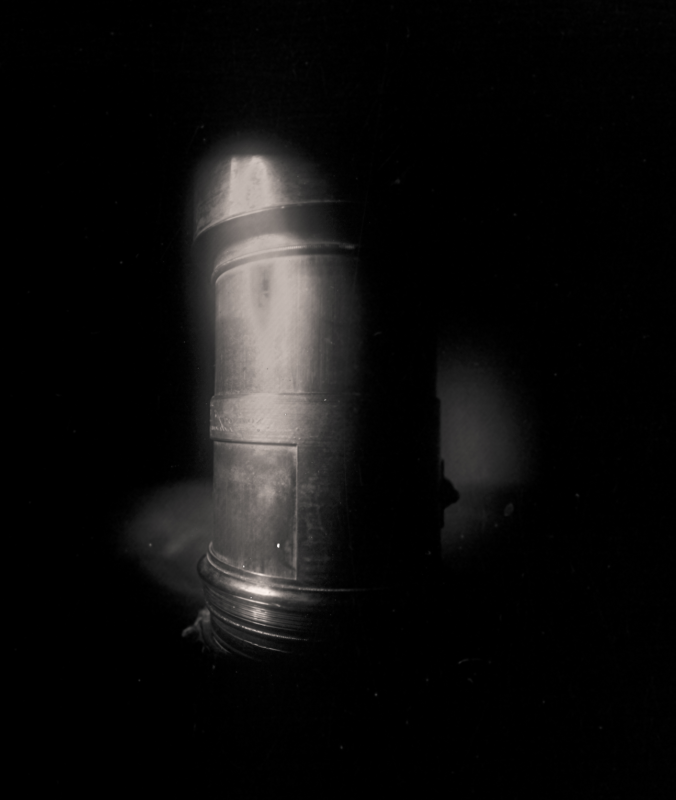Tiny Lens Creates Huge Headaches for Wet Plate Photographer
Photographer Markus Hofstaetter’s wet-plate work often features big, ultra-fast lenses. However, Hofstaetter recently acquired a very tiny lens that has caused him some massive problems.
Denis Krieg of Wet Plate Dreams recently visited Hofstaetter’s studio for the “Inspired” series, and came bearing gifts. Denis gave Hofstaetter the troublesome tiny lens, which was built by Carl Reichert in Vienna, Austria, in 1908. Hofstaetter is Austrian, so there’s a nice personal connection.
The Reichert “Polar” 30mm f/4 lens could have happily sat in a display case on Hofstaetter’s desk or shelf. However, that’s not how Hofstaetter operates, and he routinely finds clever ways to adapt strange and unusual lenses to his photographic purposes. In the case of the Reichert lens, which was originally designed for microscopes, perhaps it would have been better as a conversation piece. That would have at least been less frustrating.
![]()
At the heart of the issue was the 3D-printed lens board, which is required to attach the tiny lens to Hofstaetter’s wet plate camera. However, the lens couldn’t focus because “the camera is too big.” Hofstaetter designed and printed a second lens board and included more space between the lens, and the same issue arose.
Going back to the drawing board for a third time, Hofstaetter printed a significantly different lens board, allowing him to get the tiny lens extremely close to the wet plate, which finally enabled sharp focus. It also resulted in a plate camera that looks vastly different from the cameras Hofstaetter typically uses, which often feature big lenses and long bellows. The tiny lens required a Frankenstein-esque camera.
Ultimately, the tedious and challenging troubleshooting with the lens board paid off in a big way. The small lens delivers a nice image. The plate Hofstaetter created is available on eBay.

Solving problems is part of any photographer’s workflow, but Markus Hofstaetter’s adventurous spirit and distinct photography equipment means the wet-plate photographer solves issues frequently.
He recently combined analog and digital photography processes to create high dynamic range (HDR) tintypes. Hofstaetter also overcame 7,000 kilometers of separation to capture a portrait with his friend.
Hofstaetter’s work is available on his website, YouTube, and Instagram.
Image credits: Markus Hofstaetter